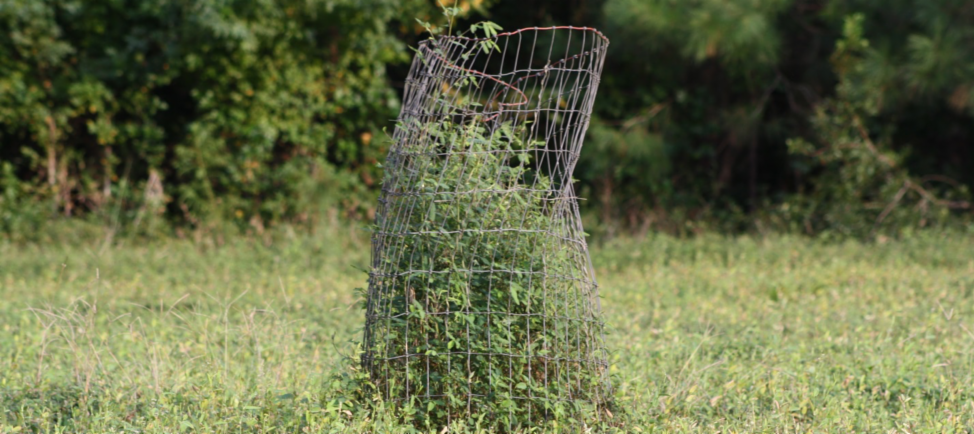
Photo Credit: Marion Barnes.
One of the challenges faced by a cattleman or other producer of grazing animals is assessing the productivity of pastures. The reason is that grazing animals “eat the evidence” (i.e. they eat the pasture forage). But a forage-livestock producer at least knows the size of the pasture area and how many animals of what size and weight have, or have had, access to it. Thus, with some knowledge of animal nutritional requirements, forage species productivity, and the amount of supplemental feed that was needed (if any) a producer can get a good feel for the productivity of a pasture.
However, a person who plants wildlife food plots has much less information to work with. In many cases the size of the wildlife population having access to food plots is unknown. Especially when forage height is short, it is not possible to even make a good estimate of how much forage is being (and has been) produced, making it difficult to get a feel for pasture productivity and nutritional benefits to grazing animals.
An exclusion cage is a simple, inexpensive tool that can be used to get a better understanding of animal consumption. An exclusion cage is simply a device that prevents animals from grazing in a small area so forage growth in that spot can be observed. It can be used with cool season or warm season forages. In some situations, this can be of benefit to cattlemen and other livestock producers, but can especially provide insight into the productivity of a wildlife food plot (discussion in this article will be limited to deer).
There are many possible designs for an exclusion cage, but the general requirements are that where deer are present, a acage should be at least four feet high, and ideally provide grazing protection for at least six to eight square feet of ground cover. Animals should not be able to stick their heads through the side of the exclusion cage to eat the forage inside. The cage needs to be fastened securely to the ground (sturdy stakes or rebar work well) to prevent animals from pushing it over.
The easiest and least expensive way to make an exclusion cage is to use woven wire fencing to make a circular cage, although hardware cloth or chicken wire can also be used. A ten foot length of such material can be used to form a circle three to four feet in diameter. Solar powered electric fencing can also work well. Regardless of design, an exclusion cage can be of benefit in several ways.
*By comparing the amount of forage growth in the area where grazing has been restricted to forage growth available outside the exclusion cage, the manager can observe how much forage has been consumed, which provides an indication as to how much the food plot has benefitted wildlife.
*This comparison can also help a wildlife manager assess the deer population in the area. If there is much more growth inside than outside the exclusion cage, the deer population is probably high. The opposite would likely be true if the forage heights are similar. This provides insight as to whether more or less food plot area is needed as well as whether steps may need to be taken to lower the deer population.
*Observation of the plant species growing inside and outside the exclusion cage can be helpful as well. For example, if a mixture of forage species was planted but only certain ones are mainly present inside the exclusion cage, that is evidence as to which plants animals prefer. If some weeds are present inside the exclusion cage that are not present on the outside, that means they are likely being consumed along with planted species.
*If there is a poor stand of forage plants both inside and outside the exclusion cage, there was either an establishment problem, or some factor unrelated to grazing (perhaps diseases or insects) affected the stand.
It is common for a wildlife manager to underestimate the extent to which a wildlife plot is being used. After all, deer are primarily nocturnal, so there is little actual observation of time spent grazing. A food plot in which plant heights are short may appear to not be growing well, but in reality it may simply be that plants are being heavily grazed.
__________________
Foraging Ahead is a column presented by Ragan & Massey and written by Dr. Don Ball, Professor Emeritus at Auburn University. Dr. Ball is one of the authors of “Southern Forages,” available here.
